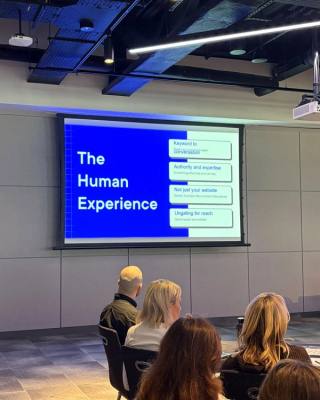Businesses don’t run on leads, they run on customers.
Rob Beirne, Client Engagement Account Manager at Wolfgang Digital made this simple statement at a talk earlier this year. It struck me as a fact that was so obvious, so important, and yet so easily forgotten.
As such, I’d like to offer a reminder to the value to be gained from focusing on customers, and the pitfalls that can come from obsessing with leads. This is not only relevant to marketing teams, but also to web design companies such as Kooba, who must remember to target the metrics that matter, and build experiences that put customer acquisition first.
What’s in a name?
Firstly, why should we even distinguish between leads and customers? In the conventional rationale of marketing, leads are just customers-in-waiting, occupying a higher (and broader) section of the sales funnel. This is an accurate distinction between the two, but not a complete one. The issue is that not every lead is made equal. Some are virtually begging to convert into customers, whereas others are, to put it frankly, wasting your time. Most leads, of course, sit somewhere between these two extremes, but all of them are unique with regards to the effort needed to convert them.
Quality and quantity
Traditionally, this issue of lead variety was ignored. After all, if we just assume that each lead is of equal value, then more leads will always equal more customers.
Unfortunately, it's not that simple.
If increasing the volume of leads also reduces their quality, then less new leads will convert to customers than we might expect. Inversely, if we generate less leads of a higher quality, our conversion rate will increase, and we may see an uptick in customers. Put simply, lead quality matters, and our marketing and web design choices will influence the quality of those leads.
The quality of leads generated by your marketing campaigns also influences the efficiency of your sales team. By excluding low quality leads, you save valuable time and resources that can be redirected to more lucrative sales opportunities.
Your website’s role
At Kooba, we pride ourselves on changing the metrics that matter most. At first glance, this might mean measuring conversions as a gauge of success for a lead-gen website. Of course, the volume of conversions do tell us a lot about a site’s ability to provide value, but the quality of leads generated also needs to be a central consideration. Your website needs to prioritise users who are most relevant to your product, even if that comes at the expense of more superficial metrics such as site traffic or key events.
So what does this look like in practice? Here’s a few guidelines:
- Make pricing information clear and accessible to limit the amount of leads who will be later disqualified by their budget.
- Provide useful and informative content across your website to help persuade customers less familiar with your product.
- Carefully select fields on your lead-gen pages in order to gather the most important information for your sales team, giving them a chance to score leads in advance.
Ultimately, your website should present your product in an informative, clear, and accessible manner. Doing so will filter out unsuitable leads, and better persuade more valuable customers. It’s also just best practice, especially if you are concerned about the accessibility or usability of your digital platforms!
As always, don’t hesitate to get in touch if you think your site could drive more customer conversions, and check out Wolfgang Digital’s full seminar if you found the concepts discussed here interesting.








